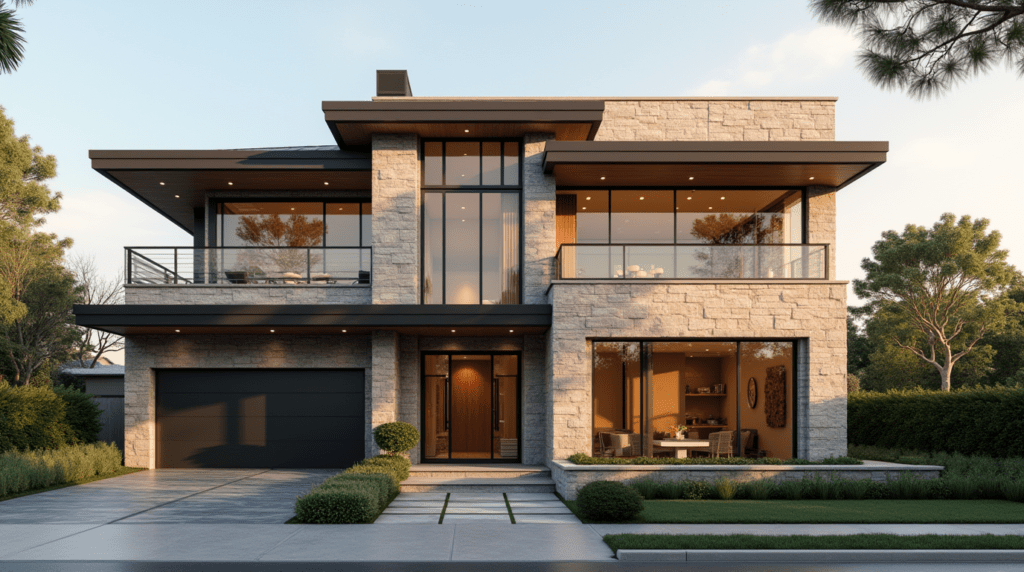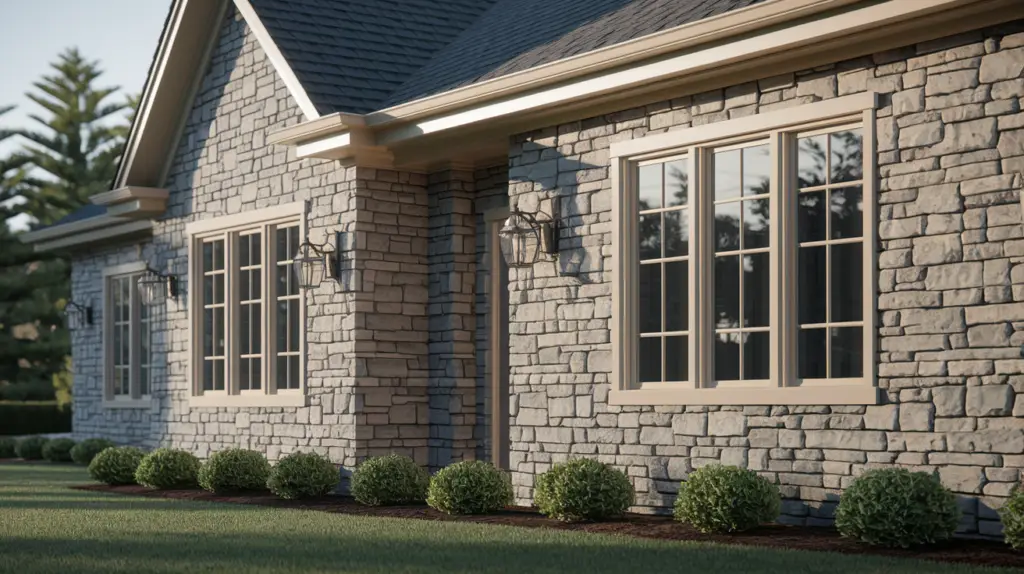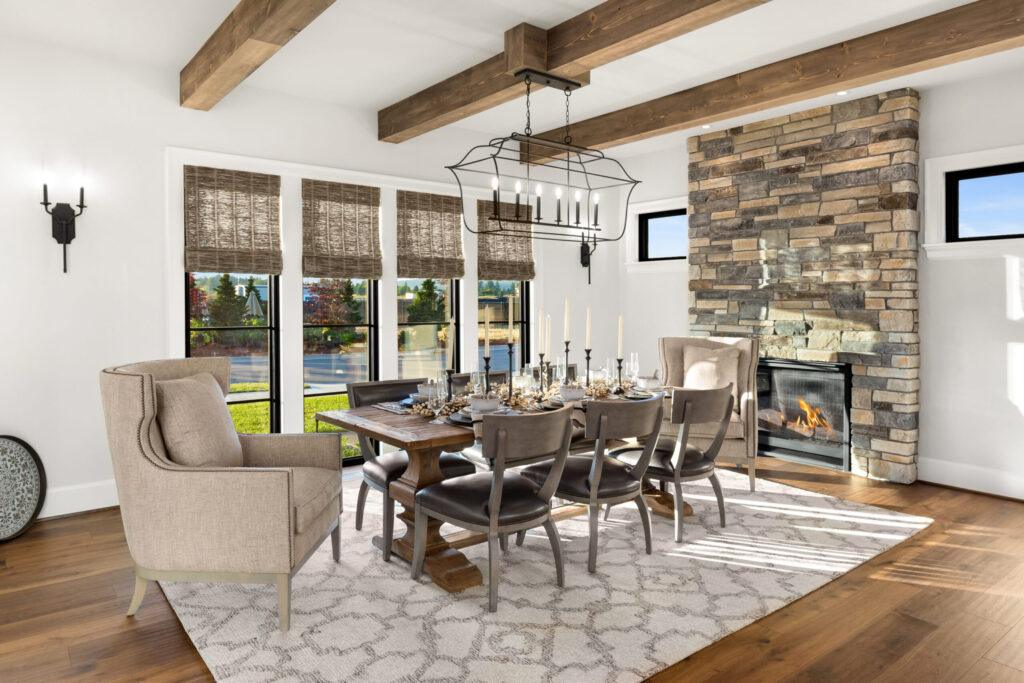Transforming your space can feel daunting, yet the right choice can elevate your home’s curb appeal dramatically. In this comprehensive guide to architectural stone cladding, we will explore how this stunning exterior finish can turn an ordinary facade into a masterpiece. Whether you’re looking to add a touch of rustic charm or a modern aesthetic, architectural stone cladding offers a versatile solution to suit any style. With a wide variety of textures, colors, and patterns available, you can create an inviting atmosphere that leaves a lasting impression. Dive into the fascinating world of stone cladding and discover expert tips, trending designs, and practical advice that will help you make informed decisions. Say goodbye to dull exteriors and hello to a visibly striking transformation that reflects your unique taste and personality. Ready to take the first step towards your dream exterior? Let’s get started!

Benefits of Using Stone Cladding for Exteriors
Architectural stone cladding offers numerous benefits that make it an excellent choice for enhancing the exterior of your home. One of the most significant advantages is its aesthetic appeal. Stone cladding can transform a plain or outdated facade into a sophisticated and visually striking exterior. With a wide variety of textures, colors, and patterns available, you can create a customized look that complements your home’s architecture and reflects your personal style. Whether you prefer the timeless elegance of natural stone or the sleek, modern look of engineered options, stone cladding can help you achieve the desired effect.
Another benefit of stone cladding is its durability. Stone is a robust and long-lasting material that can withstand harsh weather conditions, including heavy rain, strong winds, and extreme temperatures. Unlike other exterior finishes that may deteriorate over time, stone cladding maintains its integrity and appearance for years with minimal maintenance. This longevity not only enhances the overall value of your property but also provides peace of mind knowing that your investment will stand the test of time.
In addition to its aesthetic and durability advantages, stone cladding also offers practical benefits. For instance, stone cladding provides excellent insulation properties, helping to regulate indoor temperatures and reduce energy consumption. This can lead to lower heating and cooling costs, making your home more energy-efficient. Additionally, stone cladding can act as a protective barrier against moisture, preventing water infiltration and reducing the risk of mold and mildew growth. These benefits make stone cladding a smart and cost-effective choice for homeowners looking to improve their property’s exterior.
Types of Architectural Stone Cladding Materials
When it comes to architectural stone cladding, there are several material options to choose from, each offering its unique characteristics and advantages. Natural stone cladding is one of the most popular choices due to its timeless beauty and authenticity. Natural stone cladding is quarried from the earth and includes options such as granite, limestone, sandstone, and slate. Each type of natural stone has its distinct texture, color, and pattern, allowing you to create a one-of-a-kind look for your home. Natural stone cladding is also highly durable and can withstand extreme weather conditions, making it a long-lasting choice for exterior applications.
Engineered stone cladding is another popular option, offering the look and feel of natural stone with added benefits. Engineered stone is made from a combination of natural stone aggregates and resins, resulting in a product that is both strong and lightweight. This type of cladding is available in a wide range of colors and textures, providing more design flexibility compared to natural stone. Engineered stone cladding is also resistant to staining and requires less maintenance, making it a practical choice for busy homeowners.
For those looking for a more affordable option, there is also the choice of manufactured stone veneer. Manufactured stone veneer is made from a mixture of cement, aggregates, and pigments, which are molded to mimic the appearance of natural stone. While it is not as durable as natural or engineered stone, manufactured stone veneer is lightweight and easy to install, making it a cost-effective solution for homeowners on a budget. Additionally, manufactured stone veneer is available in a variety of styles and colors, allowing you to achieve the desired look for your home without breaking the bank.
Key Factors to Consider When Choosing Stone Cladding
Selecting the right stone cladding for your home involves considering several key factors to ensure that you achieve the desired look and performance. One of the most important factors to consider is the style and architecture of your home. Different types of stone cladding can complement various architectural styles, so it’s essential to choose a material that enhances the overall aesthetic of your property. For example, natural stone cladding such as granite or limestone is well-suited for traditional and rustic homes, while sleek engineered stone cladding is ideal for modern and contemporary designs.
Another crucial factor to consider is the climate and environmental conditions in your area. Stone cladding materials vary in their resistance to weathering and environmental stressors, so it’s essential to select a material that can withstand the specific conditions in your region. For instance, if you live in an area with frequent freeze-thaw cycles, you’ll want to choose a stone cladding material that is resistant to cracking and spalling. Additionally, consider the maintenance requirements of the stone cladding material, as some options may require more upkeep than others to maintain their appearance and performance.
Finally, consider your budget and the overall cost of the stone cladding project. While natural stone cladding is often more expensive than engineered or manufactured options, it can add significant value to your property and provide long-lasting durability. On the other hand, engineered and manufactured stone cladding can offer a more affordable solution without compromising on aesthetic appeal. Be sure to factor in the cost of installation, maintenance, and any additional features you may want, such as custom patterns or finishes, to ensure that you stay within your budget while achieving the desired results.
Installation Process of Stone Cladding
The installation process of stone cladding involves several critical steps to ensure a successful and long-lasting finish. The first step is to prepare the surface where the stone cladding will be applied. This involves cleaning the surface to remove any dirt, debris, or loose materials and ensuring that it is structurally sound. If necessary, a moisture barrier or insulation layer may be installed to protect the underlying structure from moisture infiltration and improve energy efficiency.
Next, a metal lath or wire mesh is typically installed over the prepared surface to provide a secure base for the stone cladding. The lath or mesh is fastened to the surface using nails or screws, and a scratch coat of mortar is applied over the lath to create a rough surface for the stone to adhere to. Once the scratch coat has cured, the stone cladding can be installed. Depending on the type of stone cladding being used, the installation process may vary slightly. For natural stone, each piece is individually placed and secured with mortar, while engineered or manufactured stone veneer may come in panels that are easier to install.
After the stone cladding is installed, the final step is to grout the joints between the stones to create a seamless and cohesive appearance. The grout is applied using a grout bag or trowel and is carefully smoothed and shaped to achieve the desired look. Once the grout has set, the surface is cleaned to remove any excess mortar or grout, and a sealer may be applied to protect the stone and enhance its appearance. With proper installation, stone cladding can provide a stunning and durable finish that enhances the exterior of your home for years to come.
Maintenance Tips for Long-lasting Stone Exteriors
Maintaining your stone cladding is essential to ensure its longevity and keep it looking its best. One of the most important maintenance tasks is regular cleaning. Stone cladding can accumulate dirt, dust, and other debris over time, which can dull its appearance and potentially cause damage. To clean your stone cladding, use a soft brush or cloth and a mild detergent mixed with water. Gently scrub the surface to remove any buildup, and rinse thoroughly with clean water. Avoid using harsh chemicals or abrasive materials, as these can damage the stone and its finish.
In addition to regular cleaning, it’s important to inspect your stone cladding periodically for any signs of damage or wear. Look for cracks, chips, or loose stones, and address any issues promptly to prevent further damage. For minor repairs, you can use a stone patching compound to fill in cracks or replace damaged stones. For more significant damage, it’s best to consult a professional to ensure that the repairs are done correctly and safely.
Another key maintenance tip is to apply a sealer to your stone cladding. A high-quality sealer can help protect the stone from moisture, staining, and environmental damage, extending its lifespan and preserving its appearance. Be sure to choose a sealer that is compatible with the type of stone cladding you have and follow the manufacturer’s instructions for application. Depending on the type of sealer and the environmental conditions, you may need to reapply the sealer every few years to maintain its protective properties. By following these maintenance tips, you can keep your stone cladding looking beautiful and performing well for many years.
Design Ideas and Inspiration for Stone Cladding
Stone cladding offers endless design possibilities, allowing you to create a unique and visually appealing exterior for your home. One popular design idea is to use stone cladding to create a striking feature wall. A feature wall can add depth and interest to your home’s facade, drawing attention to architectural elements such as entryways, windows, or outdoor living spaces. Consider using a contrasting stone color or texture to make the feature wall stand out and create a focal point for your exterior design.
Another design idea is to combine stone cladding with other exterior materials to create a harmonious and cohesive look. For example, pairing stone cladding with wood siding or metal accents can create a modern and rustic aesthetic that is both timeless and contemporary. Mixing materials allows you to play with different textures and colors, adding visual interest and dimension to your home’s exterior. Be sure to choose complementary materials that enhance the overall design and create a balanced and unified look.
For those looking to make a bold statement, consider using stone cladding in unexpected ways. Stone cladding can be used to create unique architectural features such as curved walls, columns, or even outdoor fireplaces. These features can add a touch of luxury and sophistication to your home’s exterior, making it stand out from the rest. Additionally, consider using stone cladding to enhance outdoor living spaces such as patios, terraces, or garden walls. The natural beauty and durability of stone make it an ideal choice for creating inviting and functional outdoor areas that can be enjoyed year-round.
Cost Analysis: Budgeting for Stone Cladding Projects
Budgeting for a stone cladding project involves considering several factors to ensure that you stay within your financial means while achieving the desired results. The cost of stone cladding can vary widely depending on the type of material, the size of the project, and the complexity of the installation. Natural stone cladding is typically more expensive than engineered or manufactured options due to its authenticity and durability. However, investing in high-quality natural stone can add significant value to your property and provide long-lasting benefits.
In addition to the cost of the stone cladding material, it’s important to factor in the cost of installation. Professional installation is recommended for stone cladding projects to ensure a proper and secure fit. The cost of installation can vary depending on the contractor’s experience, the scope of the project, and any additional features you may want, such as custom patterns or finishes. Be sure to get multiple quotes from reputable contractors and compare their services and pricing to find the best fit for your budget.
Finally, consider the long-term maintenance costs associated with stone cladding. While stone cladding is relatively low-maintenance, it may require periodic cleaning, sealing, and repairs to maintain its appearance and performance. Be sure to factor in these ongoing costs when budgeting for your stone cladding project to ensure that you can afford to keep your exterior looking its best for years to come. By carefully considering these factors and planning accordingly, you can achieve a stunning stone cladding finish that enhances your home’s curb appeal without breaking the bank.
Common Mistakes to Avoid with Stone Cladding
When undertaking a stone cladding project, it’s important to be aware of common mistakes that can compromise the quality and longevity of the finish. One common mistake is choosing the wrong type of stone cladding for your home’s architecture and climate. Selecting a material that is not compatible with your home’s style or environmental conditions can result in a mismatched appearance and potential damage over time. Be sure to research and choose a stone cladding material that complements your home’s design and can withstand the specific weather conditions in your area.
Another common mistake is improper installation. Stone cladding requires precise and careful installation to ensure a secure and long-lasting fit. Cutting corners or attempting a DIY installation without the proper knowledge and tools can lead to issues such as loose stones, water infiltration, and structural damage. It’s essential to hire a professional contractor with experience in stone cladding installation to ensure that the project is done correctly and safely.
Neglecting maintenance is another mistake that can result in a deteriorating stone cladding finish. While stone cladding is relatively low-maintenance, it still requires regular cleaning, sealing, and inspections to prevent damage and maintain its appearance. Failing to keep up with these maintenance tasks can result in a dull and worn-looking exterior and potential structural issues. Be sure to follow the recommended maintenance guidelines for your specific type of stone cladding to keep it in top condition.
Conclusion: Elevate Your Home’s Aesthetic with Stone Cladding
Architectural stone cladding offers a versatile and stunning solution for transforming your home’s exterior. With its wide range of textures, colors, and patterns, stone cladding can enhance the aesthetic appeal of any property, adding a touch of elegance and sophistication. Whether you choose natural stone for its timeless beauty, engineered stone for its design flexibility, or manufactured stone for its affordability, stone cladding can provide a durable and long-lasting finish that elevates your home’s curb appeal.
By considering key factors such as your home’s style, climate, and budget, you can make informed decisions and select the right stone cladding material for your project. Proper installation and regular maintenance are essential to ensure the longevity and performance of your stone cladding, allowing you to enjoy its benefits for years to come. With careful planning and attention to detail, you can achieve a stunning exterior transformation that reflects your unique taste and personality.
Ready to take the first step towards your dream exterior? Embrace the beauty and durability of architectural stone cladding and create a visually striking transformation that leaves a lasting impression. Say goodbye to dull exteriors and hello to a home that stands out with its exceptional design and craftsmanship. Whether you’re looking to add a touch of rustic charm or a modern aesthetic, stone cladding offers the perfect solution to elevate your home’s aesthetic and create an inviting atmosphere that you’ll be proud to showcase.
To see inspiring examples of manufactured stone applications, visit:
For more information and design inspiration, visit our blog to explore additional resources on home design with manufactured stone.



